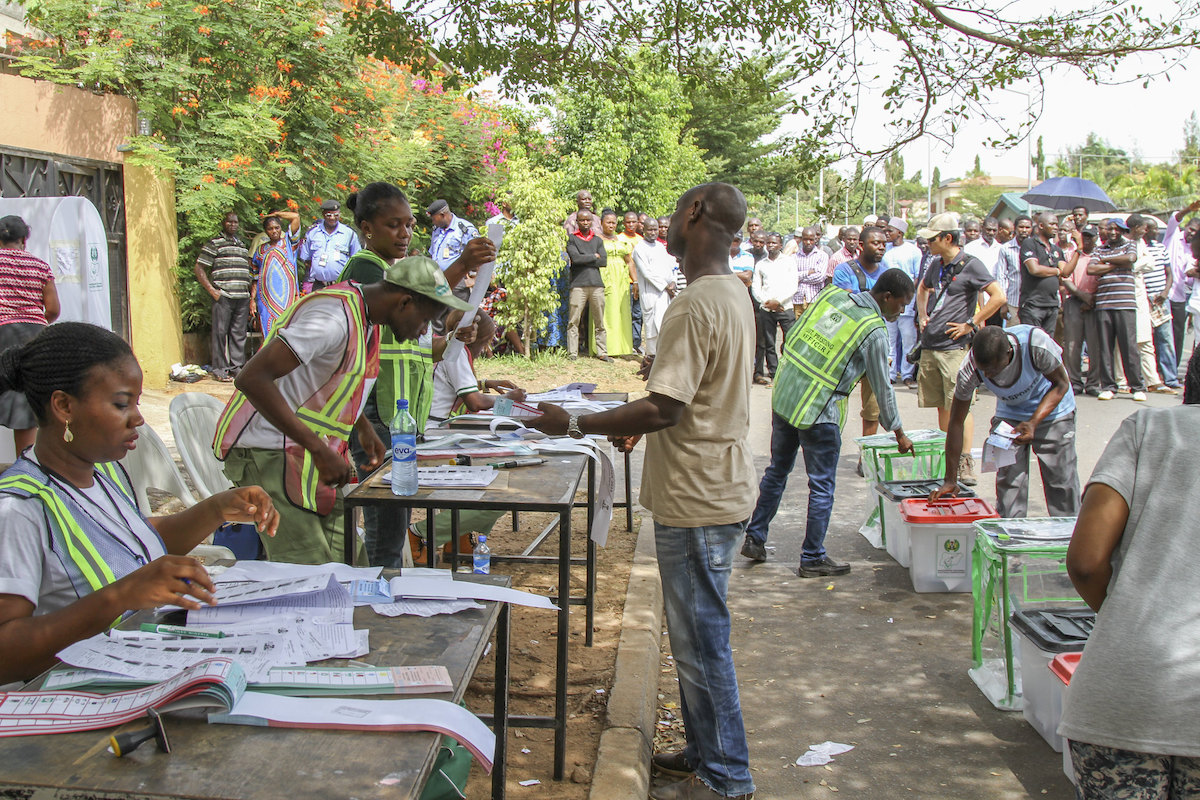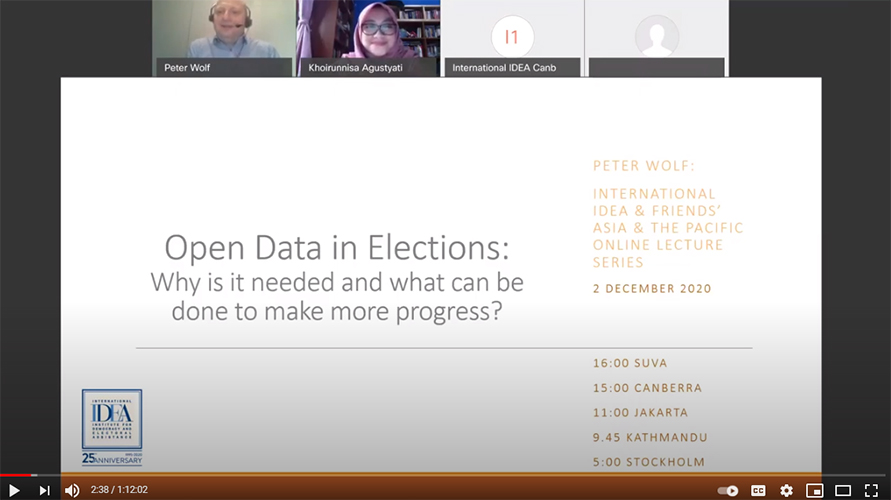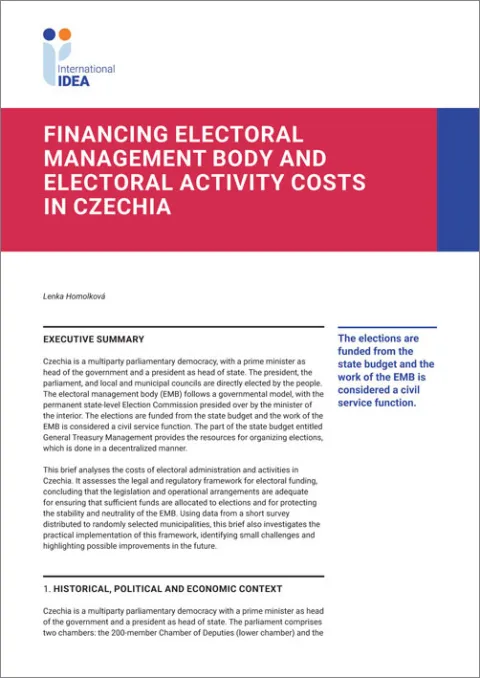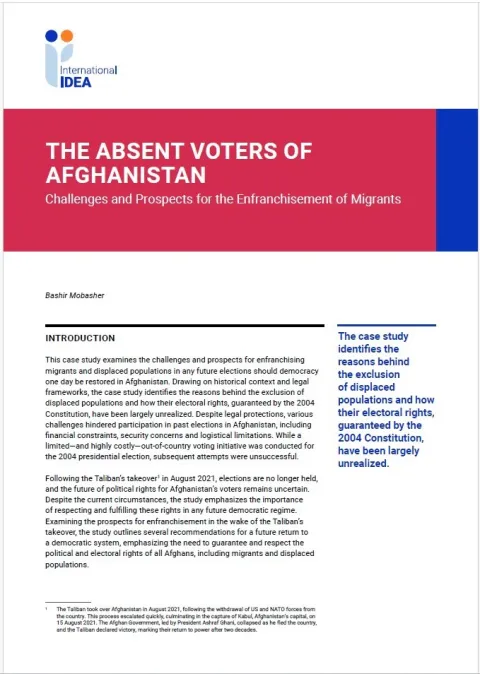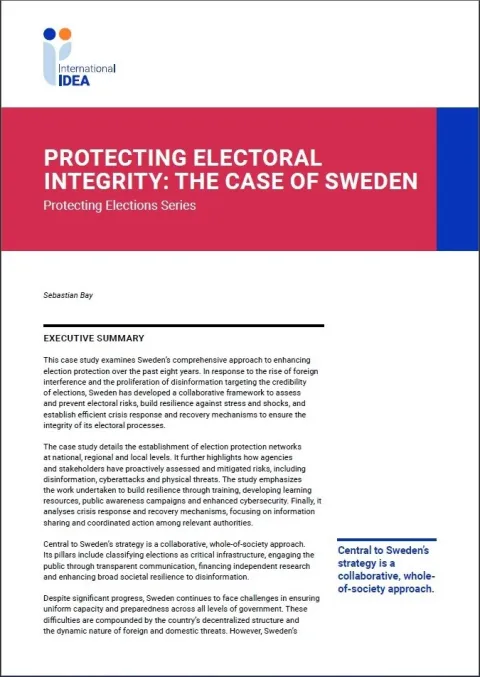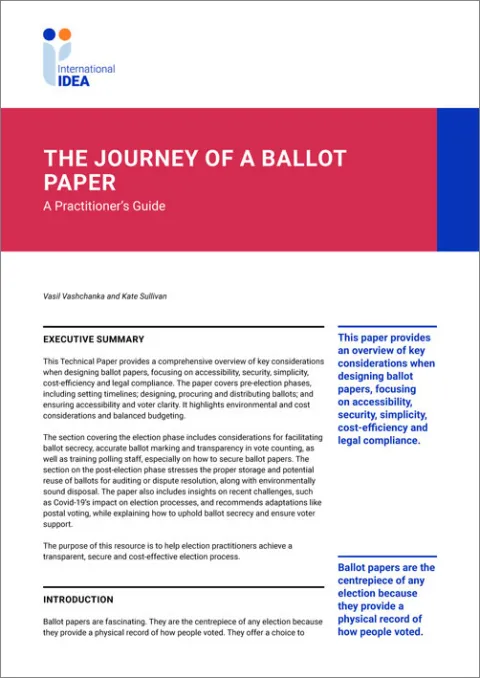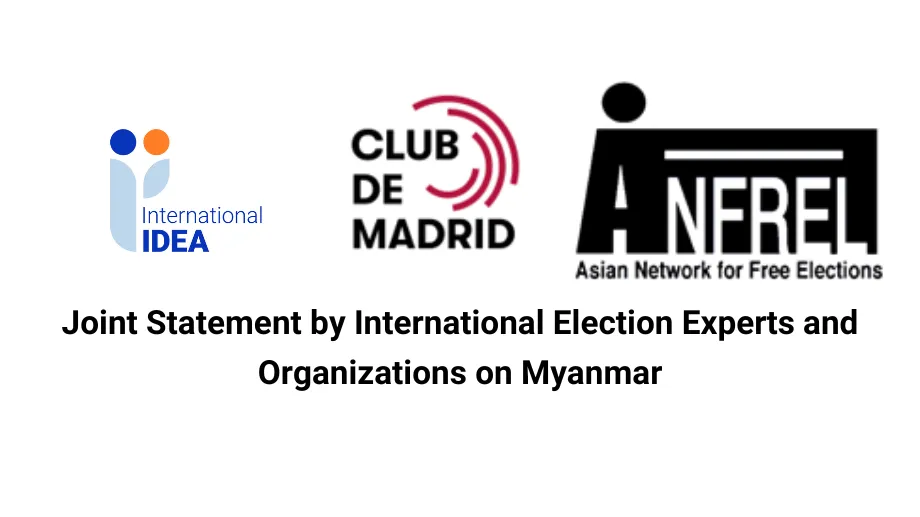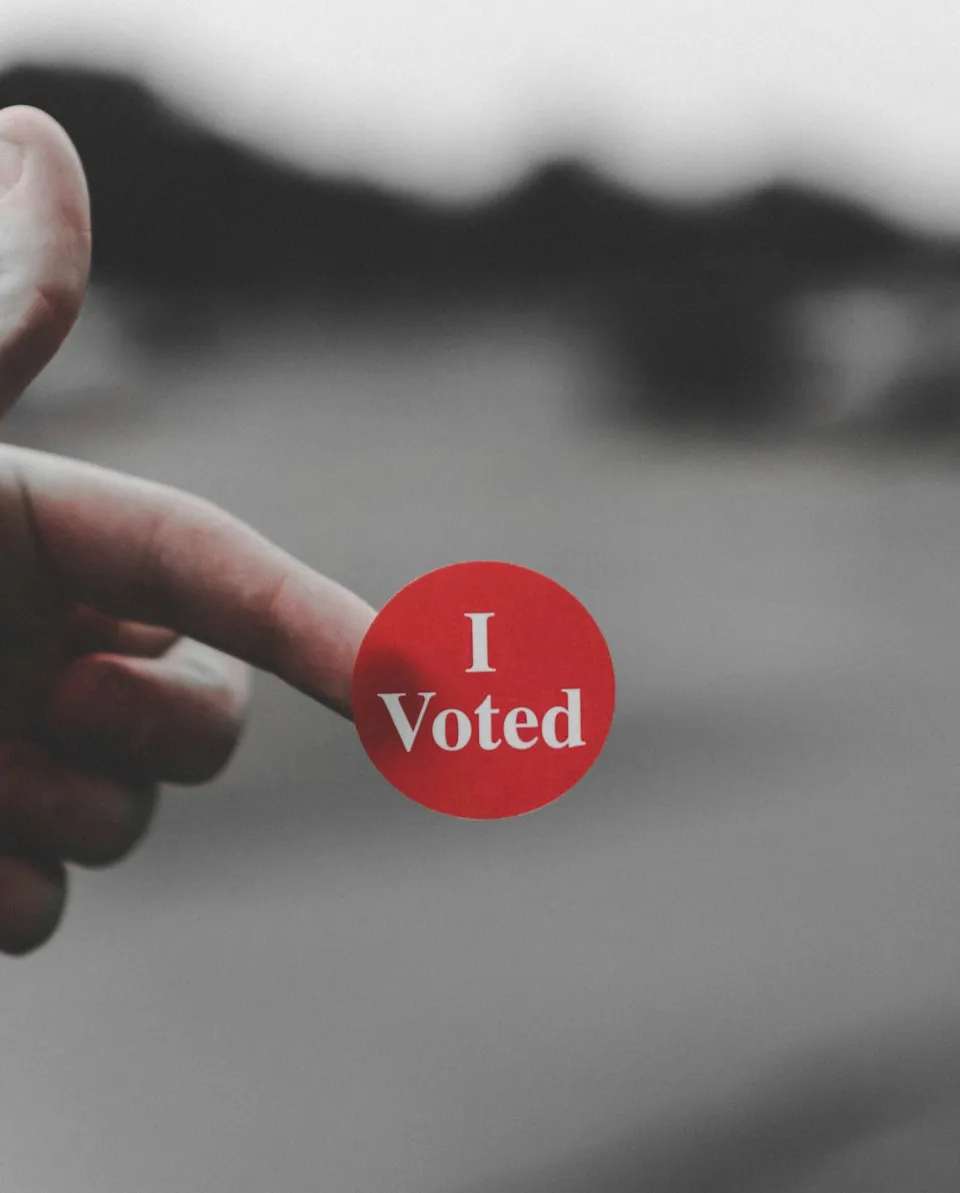Open Data in Elections: Why It Is Needed and What Can Be Done to Make More Progress
The discussion on how technology can be applied to improve the integrity and transparency of elections often focuses on complex and expensive technologies such as biometrics, electronic voting and voter identification systems.
Something unfortunately mentioned far less often is the potential to apply technology in a way that is not only much cheaper, but also arguably more efficient—the use of online tools that provide access to elections-related information based on open data principles. is indeed unfortunate as the absence of at least rudimentary open data approaches in elections can undo and even reverse the integrity gains brought about by other technologies and measures.
Details
Author(s)
Related databases & tools
Contents
1. Introduction
2. Overview
3. What is open election data?
4. Where can open election data principles be applied?
5. How can progress be made?
6. Managing the risks of open data in elections
7. Stakeholder responsibilities
8. Conclusions
References
Give us feedback
Do you have a question or feedback about this publication? Leave us your feedback, and we’ll get back to you
Send feedbackOpen Data in Elections: Why It Is Needed and What Can Be Done to Make More Progress
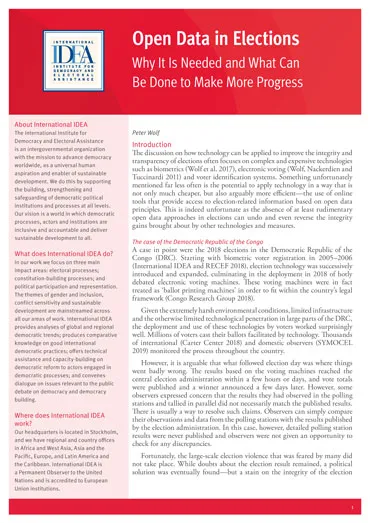
| Total views | 3864 |
|---|---|
| Downloads | 50 |
| Rating |
Authors
Related databases & tools
Give us feedback
Do you have a question or feedback about this publication? Leave us your feedback, and we’ll get back to you
Send feedback